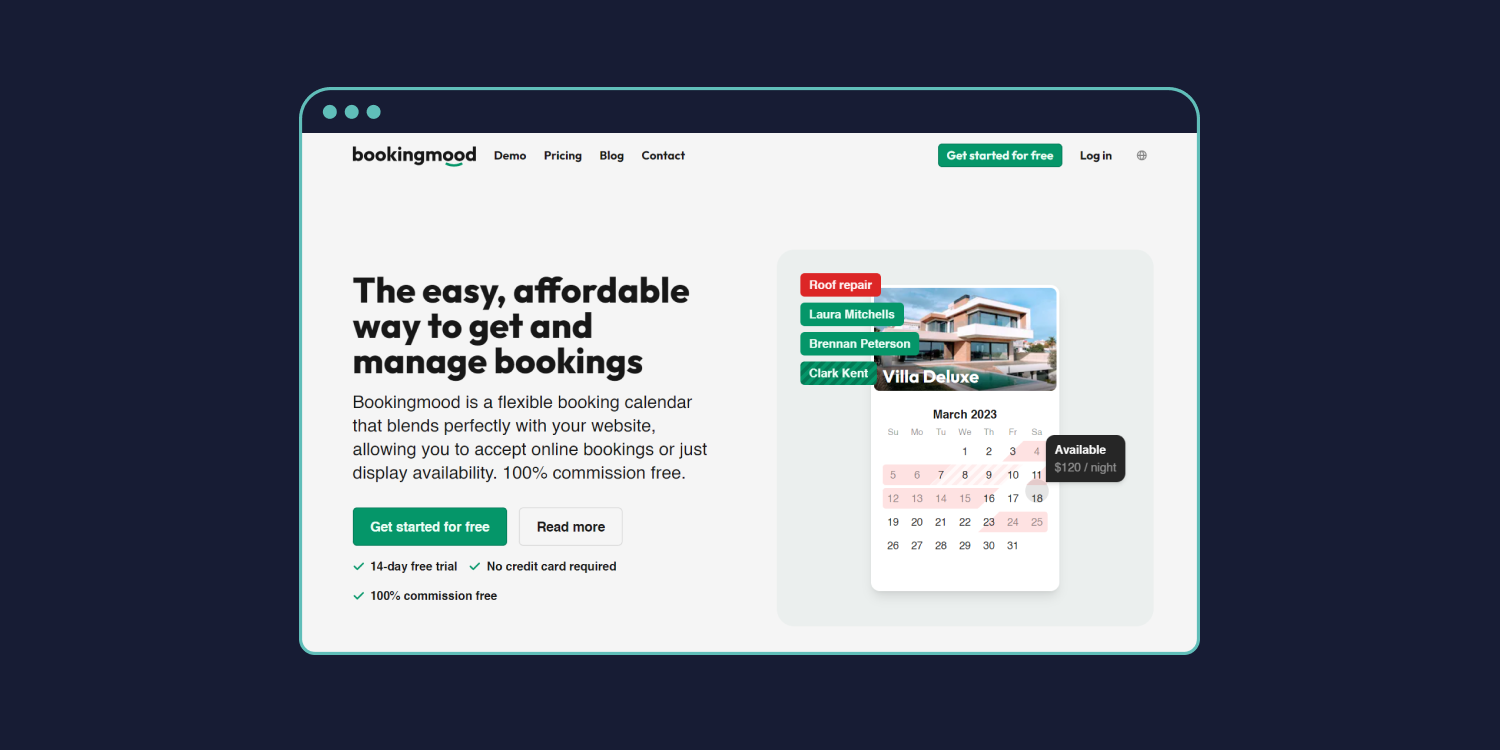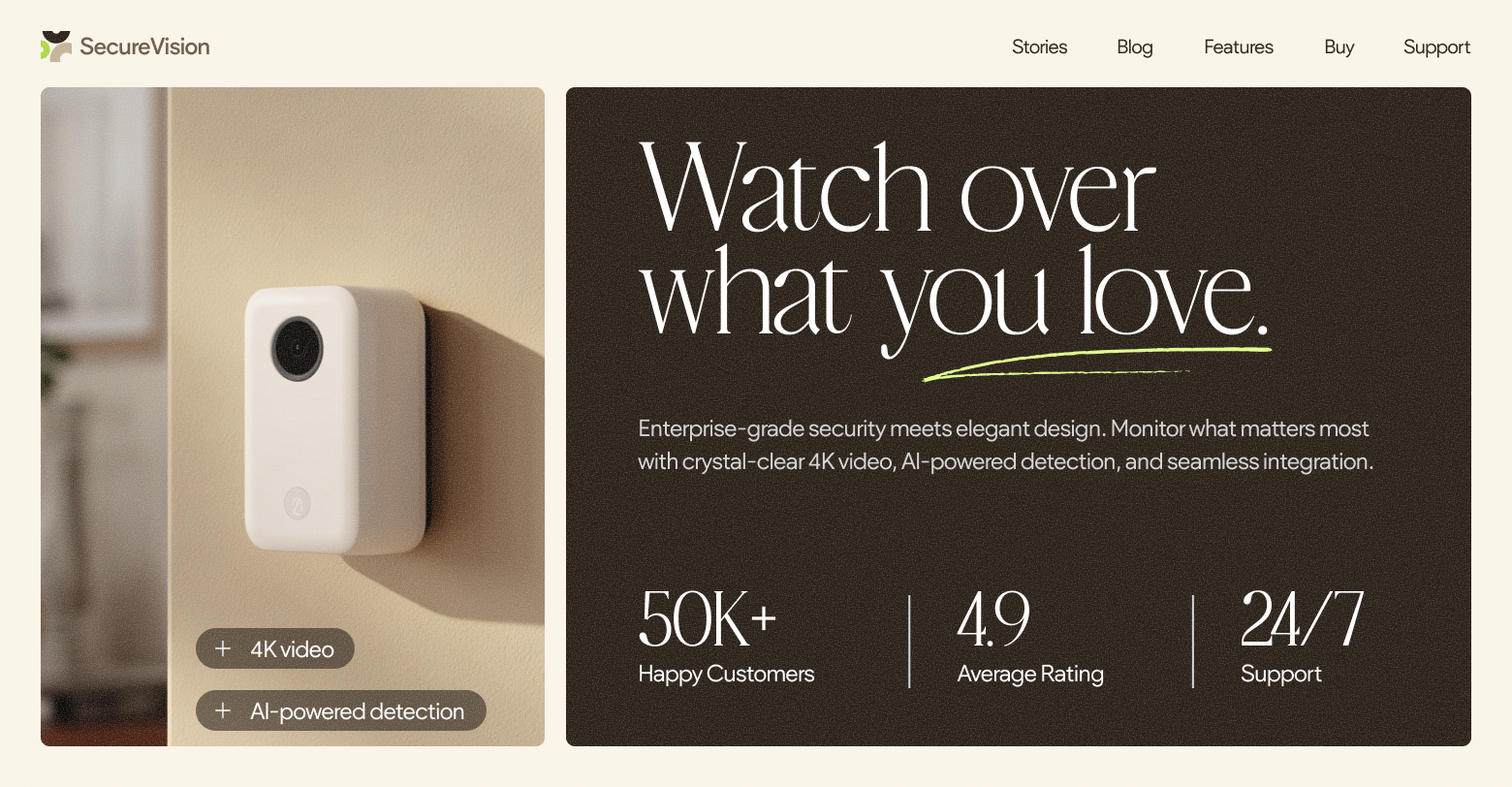As a digital marketing
agency, you have clients with all kinds of businesses that operate in various markets. For each type of client, you are probably using a variety of tools and integrations to build the perfect website. If you’re creating websites for businesses that rent out amenities or offer time-based services, you’ll want to incorporate a robust booking capability. Some of your clients will already know that they need an online booking capability, but for others, this could be a valuable upsell opportunity.
Why the Right Booking Calendar is Important and What to Look For in a Booking Software
Using the right booking calendar in your website builds allows you to offer your clients many advantages, including saving them time, improving their user experience, driving more bookings, and giving them more control over their costs.
Save Time for Your Clients
A straightforward booking calendar will help your clients’ website visitors quickly see when an amenity or service is available for booking. This will save your clients time spent responding to email inquiries and taking bookings by phone.
To ensure this benefit for your clients, you’ll want to choose a booking calendar software that is lightweight, easy to manage, and natively integrated with your web building platform.
Drive More Bookings
The fewer steps there are in a booking process, the more likely website visitors are to convert. Calls to action like call- or email-to-book can drive would-be customers away because of the lack of clarity in the booking process, the extra steps involved, and the need to wait for a response or confirmation that the booking was successful.
In contrast, a frictionless online booking experience will drive more conversions for your clients. Their users can simply click on a calendar, view the price, and make a booking right from the website in just a few minutes.
Create a Better User Experience
A well-designed booking calendar makes your clients’ websites look more professional, which enhances the user experience for their visitors. Booking capability can help build credibility for your clients’ business and create a positive brand experience that will keep customers coming back. Choosing a booking software that provides a modern look and feel to the booking process will further enhance the user experience.
Create an Independent Booking Channel - and Avoid 3rd Party Costs
More and more rental platforms are charging high fees for bookings. With a good booking solution, your clients can create their ideal independent booking channel that they can manage themselves. Most importantly, this empowers your clients to regain control over their own costs. To provide this advantage to your clients, look for a booking software that offers both powerful functionality and fair, transparent pricing.
Gather Valuable Data and Insights
For your clients, it is very useful to understand who is renting their product or service or who is booking their holiday rental. It's also important for them to be able to capture valuable feedback from their clients. With the right booking tool your clients can seamlessly gather feedback and see how their rentals are performing. With this data, your clients can optimize their pricing and availability, further improving the booking experience.
What Types of Clients Can Benefit from a Booking Calendar?
Booking software can be used for a wide variety of businesses, including:
- Motorhomes and campers - Motorhomes and campers are very popular nowadays. Unlike holiday homes, most motorhomes are rented out 'per day' instead of 'per night'.
- Motorcycles - A lot of motorcycles are booked for a day or a weekend. With a good booking solution you can help motorcycle rental companies keep track of their bikes and bookings.
- Wedding photographers - The availability of a wedding photographer is very important. Make sure photographers can easily manage their availability and make it visible on their website.
- Wedding venues - Unlike holiday homes, most wedding venues are booked for just one day. With the right booking tool you can help owners of wedding venues to communicate the availability clearly and keep track of all bookings.
- Clothing rentals - The trend of renting clothes for special occasions has been on the rise. After all, why buy an outfit for one day, when you can simply rent a new look? A website with booking capability makes it easy for these types of businesses to rent out exclusive clothing.
- Equipment rentals - A lot of smaller companies rent out work equipment like drills, or sports equipment like climbing material, on a daily basis. Choose the right booking tool to manage the bookings and availability.
- Pet services - With the right booking software you can help pet sitters and dog boarders manage their availability based on their capacity.
Bookingmood: A Powerful Booking Solution Now Available in the Duda Website Editor
Bookingmood is used by vacation rental owners and rental companies all over the world to manage their bookings and availability with ease and create their own independent booking channel. The Bookingmood interface is lightweight and easy to manage, which makes managing your availability a breeze.
Bookingmood distinguishes itself from other booking systems by combining powerful features with an easy-to-manage system for an honest price.
Bookingmood combines this usability with a modern user interface that adds professionalism to your websites and creates positive user experiences. Bookingmood is the first flexible booking calendar that is fully integrated in the Duda website builder. This makes it incredibly easy to create a booking calendar and insert it into your clients website as a native Duda widget in just a few mouse clicks. Your clients will be able to create and manage their calendars and bookings right from the Duda website editor.
Related Posts
By Ilana Brudo
•
November 13, 2025
Don't let AI-generated websites cause day-two headaches. Learn why agencies need governance and control, and how Duda's AI stack offers speed without the risks.
By Shawn Davis
•
November 6, 2025
Learn how Jared Broussard's agency scaled client websites by switching from WordPress to Duda, saving time and costs while boosting efficiency and growth.
By Ilana Brudo
•
October 30, 2025
Stop the magic, start the security. Uncover the hidden risks of AI "vibe coding" in web development and build safer websites for your clients.
Show More









